How to Brush Your Cat and Why It’s Good to Do It
Even if cats are used to grooming themselves, when you give them a hand to do it once or twice a week, both of you and your cat will reap the many benefits. It helps them prevent some health problems and it keeps your house cleaner. 5-Minute Crafts wants to show you the best way to brush them to quickly gain their confidence and we’ll also explain the reasons why it’s important to do this.
Tips on how to brush your cat like a pro
Step 1. Start by petting the cat
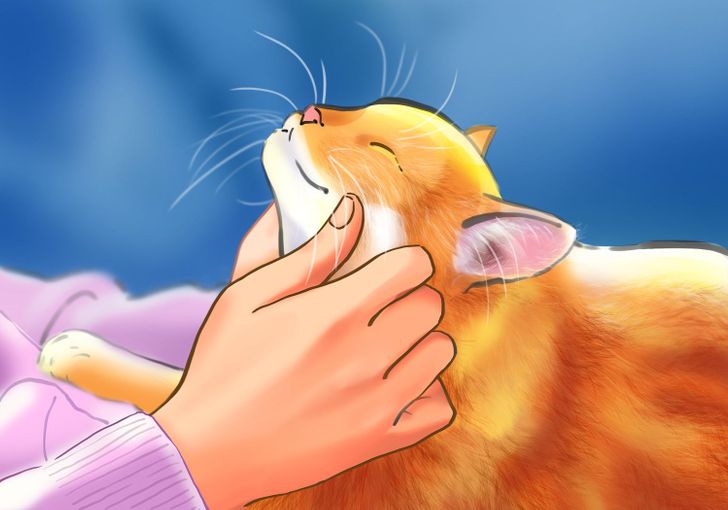
-
First make sure your cat is feeling comfortable and that it’s in a good mood. That will make it more receptive to being petted and groomed with a foreign object. When you see that they’re calm, approach them and pet them.
Step 2. Then sit them on your lap and bring the brush close to them so they can smell it.
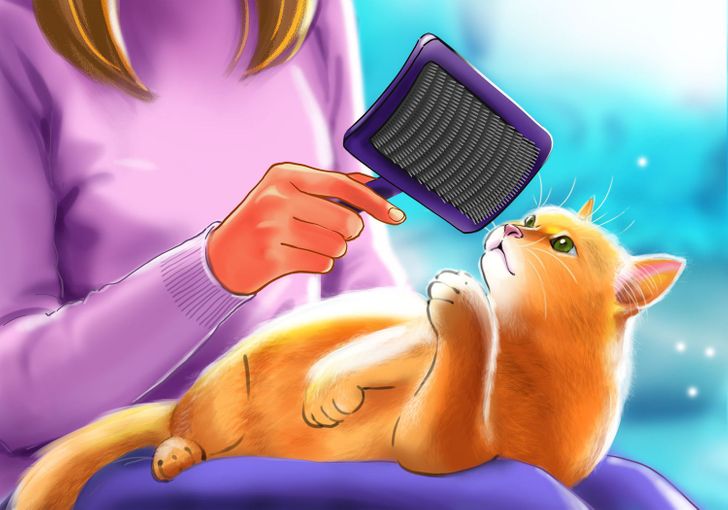
-
Sniffing the brush, or even playing with it, will soon make the kitten familiar with the situation and will gain their trust when looking at it. Otherwise they might suspect that it’s a dangerous object.
Step 3. Start by making smooth movements and in areas that are considered “easy” to brush
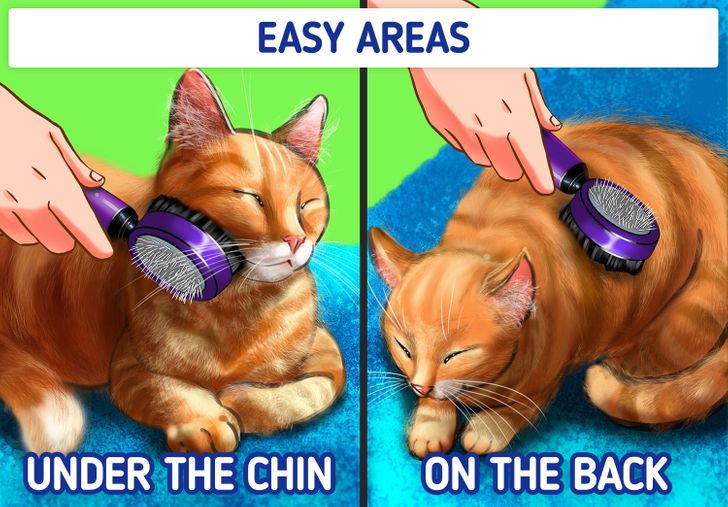
-
In principle, it’s advisable to try brushing them on the areas that you know they enjoy being petted already. For most cats, that would be the back, under their chin, or above their ears. Of course, this can change depending on the cat.
Step 4. Go ahead and try brushing other areas
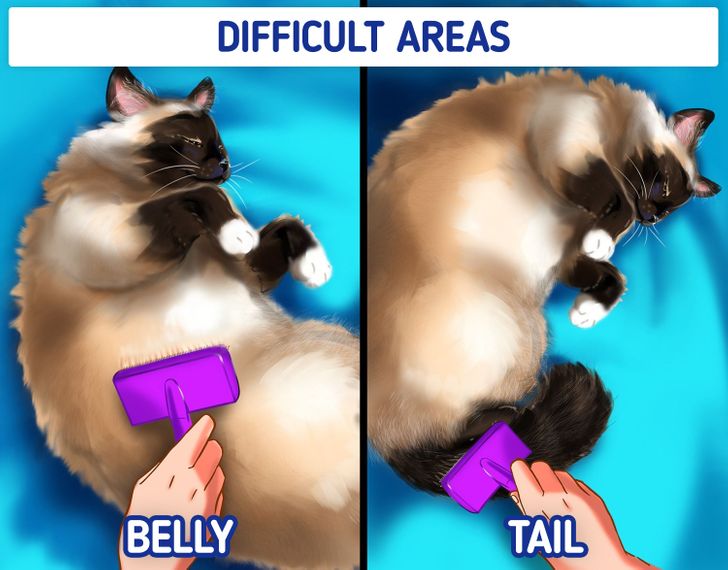
-
As they become more confident and you notice them becoming more receptive, move on to more sensitive areas like the belly, the tail, and the ears.
-
If you notice that they are uncomfortable, bored, or starting to get angry, move back to the safer areas, the ones you know they like.
Step 5. Alternate brushing and petting the cat
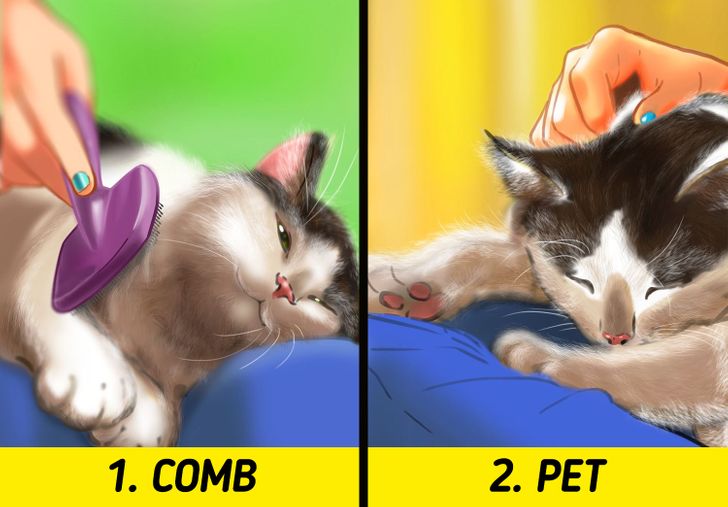
-
Alternate between petting and combing its fur every few minutes and make sure to keep brushing sessions short at first.
Step 6. Reward your cat
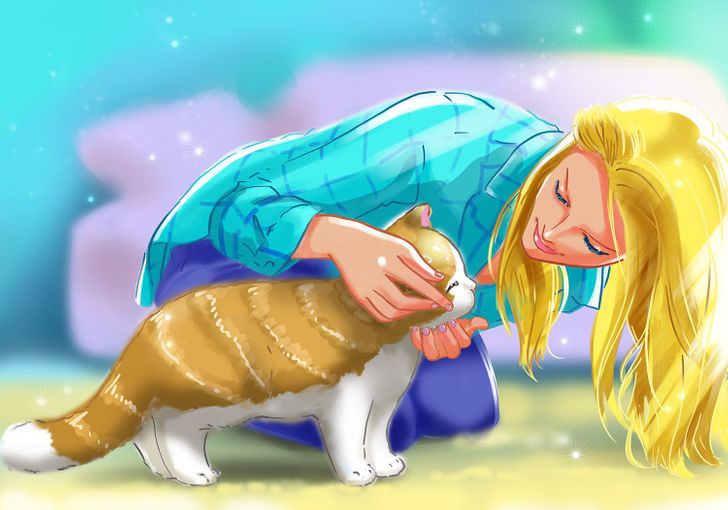
-
When you finish, play with your cat, and give them a treat or something to eat. In this way, they will begin to associate brushing with pleasurable situations.
Benefits of brushing your cat regularly
1. It helps get rid of excess hair.
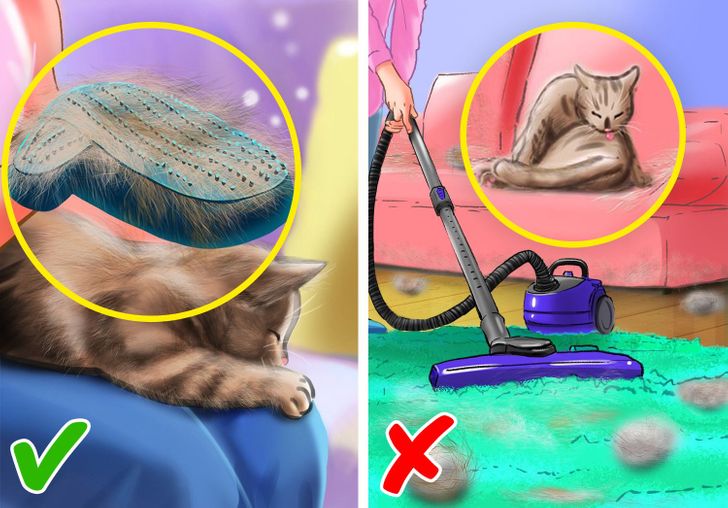
Getting rid of excess hair means that you will find a lot less hairballs everywhere in your house, including the vacuum cleaner, on your clothes, and even on the couch. That’s because you will have already removed all the excess hair with the brush (and he will not have to do it with his tongue, which could cause some digestive problems on top of everything else).
2. It’s a good way to keep fleas under control and check their general health status.
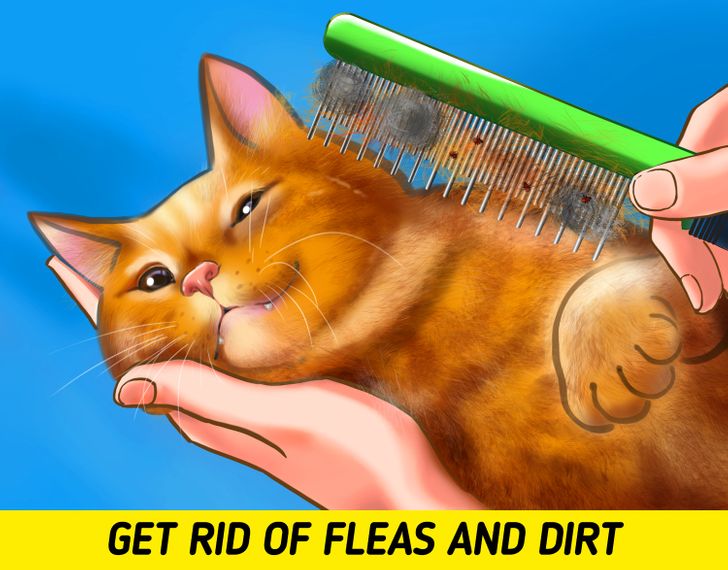
When you brush your cat, you could be helping improve the condition of their skin, because by doing so you control any injuries they may have that are hidden under their long coat. At the same time you sweep away any dirt and grease that may have accumulated in their fur, including fleas.
3. It helps to prevent cats from having to groom themselves and feel muscle or joint pain when they grow older.
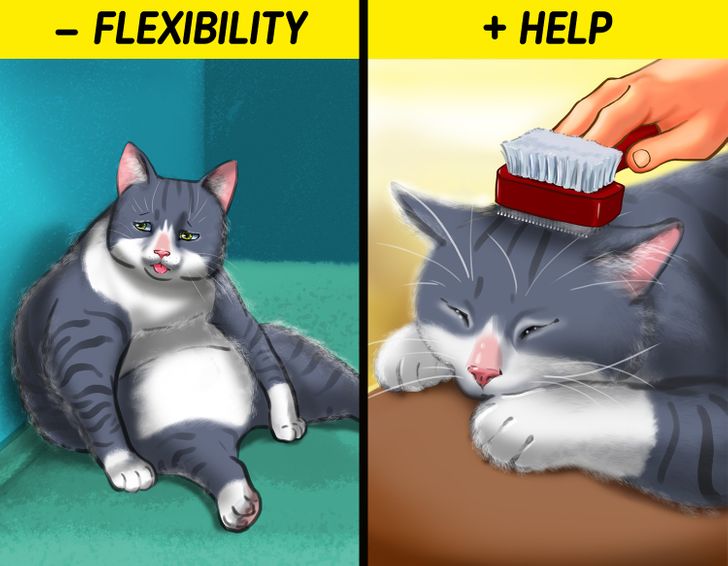
For older cats, or pets with mobility problems, grooming themselves can be extremely inconvenient because it involves them having to move and they cannot always do this without experiencing a great deal of pain. That is why it is likely that they’ll tend to groom less and less frequently. In this case, your help becomes absolutely essential.
4. It strengthens the bond between you and your cat.
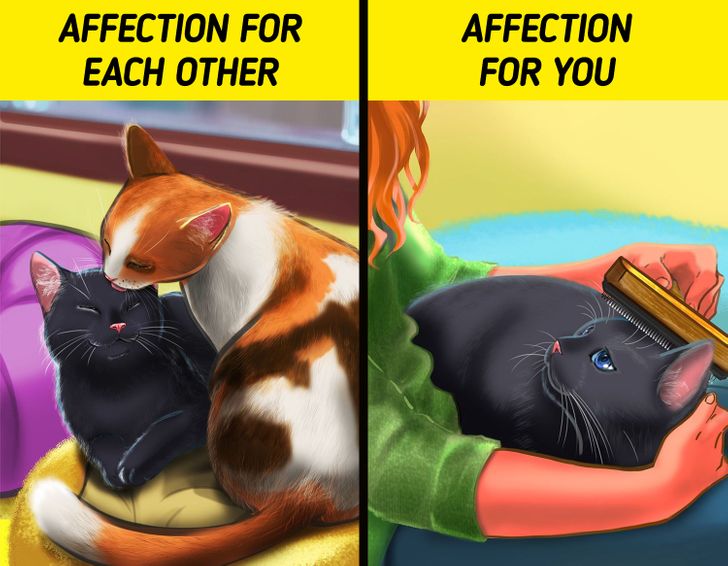
Cats groom each other to show affection and mutual trust. If you groom you cat, they will understand that as a sign of affection and trust. Soon your cat will have the same trust with you that they have with their peers.
The right brushes for every type of cat
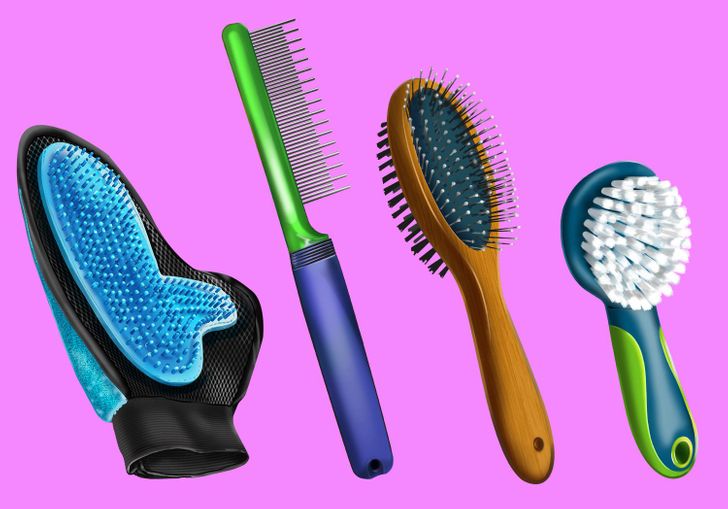
1. The one that works for most cats
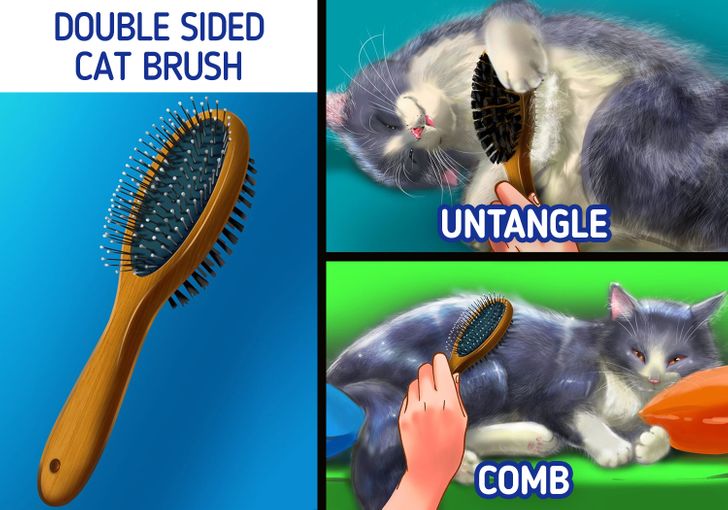
Most cats do well with a 2-sided brush, one softer side and one side that acts more like a fine-tooth comb, which is used for detangling. If your cat looks “fluffy” or " spongy," you can use the comb first to untangle the bigger knots and then the softer side to give it a proper finish and at the same time remove hair that has already fallen out.
2. The one for cats with long hair
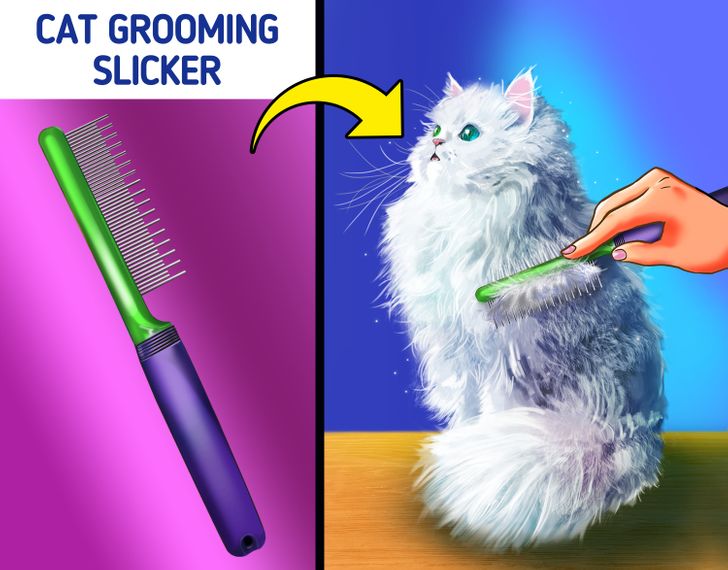
A cat grooming slicker or a molting comb could turn out to be the best suited tool to untangle long strands of hair that some cats with very long coats have. This type of comb has a combination of short and long teeth. Each of these serves a different purpose: the longer teeth go through the top coat and help with untangling, while the shorter ones sweep through the loose coat to get rid of the excess hair.
3. The one for cats with short hair
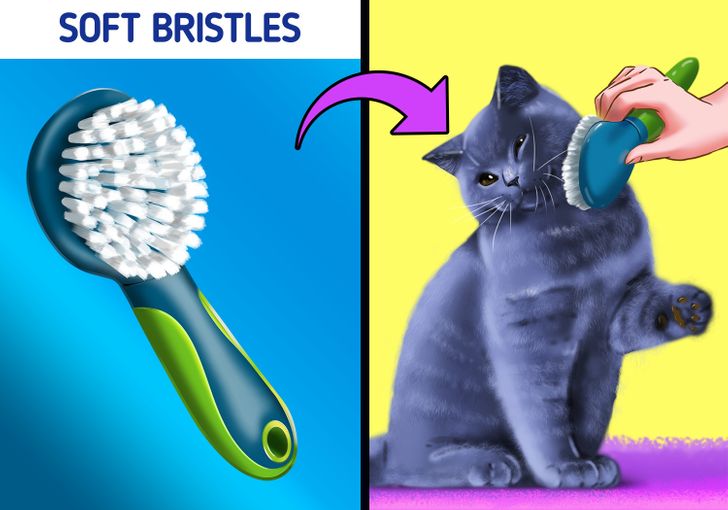
A soft bristle brush may be the right way to go if you have a short-haired cat. These types of cats have coats that will quickly become soft and very shiny with this kind of brush.
4. The one for cats with sensitive skin
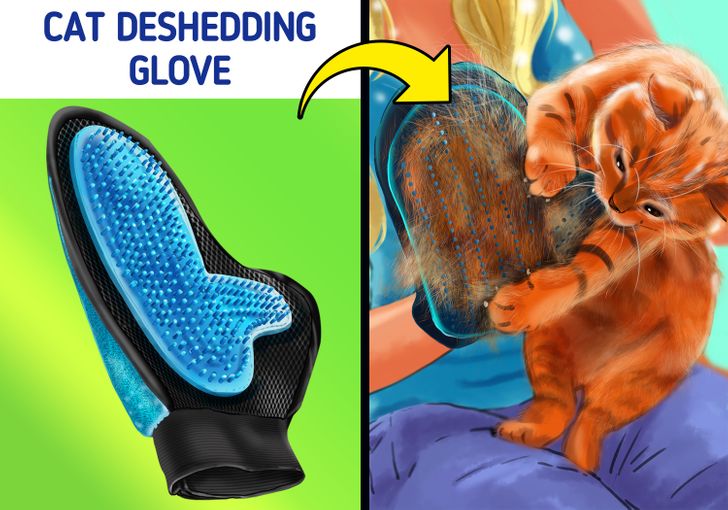
If you notice that your cat is very sensitive and reluctant to getting brushed, you can choose to use a rubber brush, or even a grooming glove, sometimes known as a cat deshedding glove. Their teeth feel very different from metal teeth and bristles, and they help massage the cat’s skin and distribute the oils that are on it — in addition, the texture of the rubber also removes loose hair.